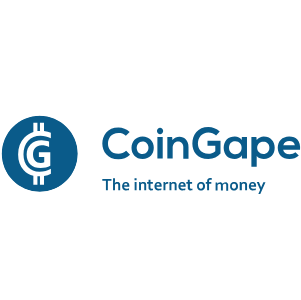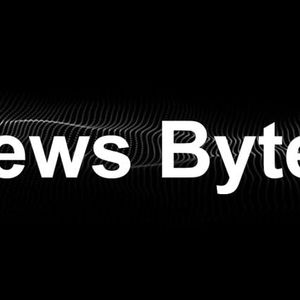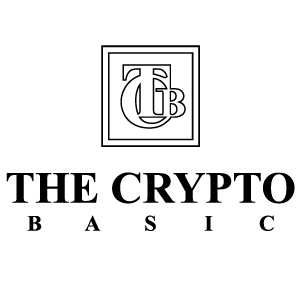Summary Bitcoin and Bitcoin ETFs have mutually benefited from a 'tide-lifts-all' wave this year as investor optimism surges ahead of this month's halving event. The iShares Bitcoin Trust ETF has gained popularity and reached $10 billion in managed assets faster than any other ETF. The upcoming Bitcoin Halving event and reduced supply of Bitcoin could further boost the prospects of IBIT and other Bitcoin ETFs. Investment Thesis The launch of Bitcoin ETFs since the start of this year has been a major catalyst in further improving awareness and optimism around Bitcoin as potential investments and ETFs as the primary vehicle for investing in it. In addition, other catalysts such as general market sentiment and other indicators in the economy have also aided somewhat in the rise in prices for Bitcoin ( BTC-USD ) and spot Bitcoin ETFs that invest directly in the digital asset. IBIT ETF vs its peers and Bitcoin, Ethereum (SA) Take the iShares Bitcoin Trust ETF ( IBIT ), for example. As seen in the chart above, the ETF gained in popularity by amassing funds faster than its incumbent peer, the Grayscale Bitcoin Trust (BTC) ETF ( GBTC ). In fact, last month, the IBIT ETF hit its $10 billion milestone in managed assets faster than any other ETF, according to this Bloomberg ETF analyst . Some of that optimism may also be coming from the upcoming Bitcoin Halving event, which, in my opinion, reduces the supply of Bitcoin circulation. Through my analysis below, along with the comparisons drawn to prior cycles, I believe Bitcoin will continue to grow on its rapid growth trajectory, boosting the prospects of the IBIT and other ETFs. Based on my analysis, I rate this ETF as a Buy. About iShares Bitcoin Trust ETF Note: I may refer to Bitcoin through this post as a ‘digital asset,’ ‘digital currency’ or ‘digital money.’ The iShares Bitcoin Trust ETF, whose assets are managed by BlackRock’s ETF arm, iShares, The IBIT fund invests its assets directly in Bitcoin, thus offering investors exposure to this digital asset. While there exist many other digital assets such as Ethereum ( ETH-USD ) or Solana ( SOL-USD ), the SEC only granted the approval of Bitcoin ETFs in January this year, which led to the launch of Bitcoin ETFs, with IBIT being the second-largest of them all. Based on IBIT’s prospectus , the fund's objective is to track the performance of Bitcoin and allocate fund capital to hold Bitcoin in its asset base. In IBIT’s case, Coinbase provides the necessary custodial services, holding Bitcoin on behalf of the IBIT fund that is used to back the fund’s assets. The fund achieves its investment objective by tracking the price of Bitcoin, primarily using CME’s CF Bitcoin Reference Rate . Peer comparison In my previous coverage of one of IBIT’s peers, GBTC, I explained why my Hold rating on GBTC was warranted. Further research suggests that the fund outflow continues to put GBTC at further risk. In my previous post on GBTC, I also explained certain issues with the GBTC fund structure that posed inherent problems unique only to GBTC. In my view, these issues will not exist with IBIT and most of its other peers. Having said that, there do exist certain risks in generally investing in Bitcoin and digital assets, which I will cover in a later section. For now, I will move on to assessing IBIT in light of its peers. I have not included Fidelity Wise Origin Bitcoin Fund ETF ( FBTC ) in this post since I had already covered it in my previous post on GBTC. IBIT fund versus its 2 largest peers (SA and Fund Prospectus documents) For comparison’s sake, I have looked at some of the largest ETFs to compare IBIT to. My reason to do so is because Bitcoin is still an emerging investment alternative. Therefore, for investors looking to gain exposure, it would make sense to go for larger ETFs that provide liquidity. In general, we can see from the peer comparison table above that Bitcoin ETFs tend to be quite liquid. While ARK's 21Shares Bitcoin ETF ( ARKB ) and Bitwise’s Bitcoin ETF ( BITB ) have just over 3 million shares exchanged daily on average, IBIT’s shares have more than 10 times the average daily volume of their peers. For broader comparison’s sake, the Invesco QQQ Trust ETF ( QQQ ) has an average daily share volume of ~45 million. Another differentiating factor here is the expense ratio. Currently, IBIT seems the cheapest of them all, but that is only because of the lower rates in its expense ratio. I have attached an excerpt below that explains the fund’s stand on its expense fee positioning, and I believe the new expense fee will be applied from here on. BlackRock will waive a portion of the Sponsor’s Fee for the first 12 months commencing on January 11, 2024, so that the fee will be 0.12% of the net asset value of the Trust for the first $5.0 billion of the Trust’s assets. If the fund exceeds $5.0 billion of the Trust’s assets prior to the end of the 12-month period, the Sponsor’s Fee charged on assets over $5.0 billion will be 0.25%. All investors will incur the same Sponsor’s Fee which is the weighted average of those fee rates. After the 12-month waiver period is over, the Sponsor’s Fee will be 0.25%. In comparison, ARKB and BITB are cheaper by 4–5 basis points. Even FBTC’s teaser rates for expense fees will end in August, after which FBTC will charge a 25-basis-point expense fee, in line with IBIT. I believe the marginal difference in expense fees here will not be meaningful enough for investors to jump ship to IBIT’s peers. The huge asset base in IBIT will continue to be an advantage for BlackRock’s iShares and IBIT’s investors, who will continue to reap the benefits of IBIT’s large asset size and the subsequent liquidity advantages. How the Bitcoin Halving Affects Bitcoin and IBIT Simply put, Bitcoin’s upcoming halving event occurs approximately once every four years, where the rate of new bitcoins circulated in the network is cut in half until the network’s goal of 21 million coins in circulation is reached, according to the Bitcoin network’s own developer documentation . This is done to control for inflation in the network and reduce the supply of Bitcoins, which can be clearly seen in prior halving events as shown in the charts below. Prior cycles prove Bitcoin may have long-term upside (Glassnode) The reduced supply of Bitcoins in the network is actually a long-term positive development for Bitcoin and IBIT. From previous halving cycles, I can observe how the price of Bitcoin benefits from the reduced supply of Bitcoin, which can be seen in both the 2016 Halving and the 2020 Halving. I also feel it is important to note that each halving event has its own set of characteristics that differentiate the performance of Bitcoin over prior halving events. For example, in the 2016 halving event, Bitcoin’s price saw a sharp contraction, from ~$760 to $540, around a -30% drop, but the price recovered and Bitcoin proceeded to touch $1k over the next year since the 2016 Halving. In the 2020 Halving, economic uncertainty due to the pandemic and globally depressed interest rates occurred, but Bitcoin still ended up crossing $20k by the end of that year. In 2024, Bitcoin is at ATH along with an influx of Bitcoin ETFs, while global liquidity has returned to aid Bitcoin, as I reflect on Lynn Alden’s observation in her foundational piece on this platform . So far, Bitcoin is following a similar trajectory as seen in prior Halving cycles, as seen in the chart below since the previous ATH in each cycle. ( live chart ) Bitcoin’s price is so far moving in a similar trajectory as seen in prior Halving cycles (Glassnode) Glassnode’s chart above compares the current 4-year price trajectory of Bitcoin to previous 4 year price trajectories of Bitcoin around the Halving events. The research points out that “the bull market may run for longer still despite the fact that we have breached the previous ATH before the halving.” I find it very plausible that Bitcoin’s upward trajectory continues if it has followed previous cycles. If this happens, I believe IBIT stands to benefit from this positive outlook. Other Factors and some Risks Investors should be aware of Bitcoin’s infamous volatility characteristics pose risks to my bullish take on Bitcoin. At the moment, there is no solution for the volatility, which also reflects the rapidly changing short-term investment sentiment and perception towards digital currencies. I noted earlier how in prior cycles in the short term there may be ~-30% drawdowns in the price of Bitcoin only for the digital asset to have scored larger gains a year later. In that case, I propose risk-averse investors wait for a retrace approximately to the 50-100 day moving average to enter. What would be a slight concern in IBIT’s case is if there is a shift in investor interest towards other ETFs. If its peers do make their expense fees more attractive for investors, there may be some outflows from IBIT. Further, the SEC has moved the review stages of various Ethereum ETFs to the next phase, and J.P. Morgan believes there is a 50/50 chance they may be approved by May. In this case, I can expect Ethereum to start outperforming Bitcoin on a relative basis, coupled with some outflows from all Bitcoin ETFs into Ethereum ETFs once the latter are made available which have some impact on Bitcoin ETFs. Note: As I had listed in my previous coverage on GBTC, this month's Bitcoin Halving event is expected to take place within a few weeks, around April 20th. Investors should be mindful of that date while entering or exiting their positions. Takeaway The long-term outlook is quite strong for Bitcoin, in my opinion. The IBIT ETF presents itself as a stable alternative for investors looking to invest in Bitcoin without the bells and whistles that come with directly investing in Bitcoin, such as digital wallets, etc. Post-halving, there may be some volatility, but my belief is that Bitcoin’s price will continue to expand, raising the prospects of the IBIT ETF. I rate IBIT as a Buy.













